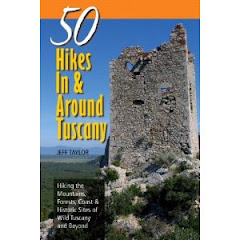Yesterday, we decided to head out to Hemmed In Hollow, located in the Ponca Wilderness within Buffalo National River. We were told this area was perhaps the ultimate highlight spot in all of Arkansas. It was truly spectacular, and thus I will be writing up a hiking description on the Hikemaster's Trail Description site pretty soon. But, the focus of this blog post is simply the adventures of just getting there. It ended up not being very straight-forward.
 |
| Along the banks of Buffalo National River after the 1300 foot descent |
It all started out when I plugged the trailhead into the GPS. It had us taking this long route going way around to get there from the campground. As I looked at the map, I noticed there was a designated county road that cut straight over there, cutting off about 10 miles from the trip. So, I overruled the GPS and off we went.
 |
| Dozens of abandoned shacks and some not abandoned were found along this dirt road |
Well, we arrived at County Road 19 of AR-7 and it turned out to be a dirt road. It was descent enough at first, so we figured we'd drive the 9.5 miles to the trailhead. At first it passed by numerous mobile homes and shacks amongst small farms.
 |
| This is true Ozark backwoods culture right here |
We couldn't believe what we were seeing. This was the Ozarks of legend. This was the Ozarks you thought only existed before the 1950's where you can imagine folks going out hunting squirrels and possums and collecting hickory nuts to survive.
The road had been getting rougher the further we went. But, when we arrived at the Buffalo National River park boundary there was an ominous sign that read, "No National Park Service Maintenance Beyond This Point"
At this stage, we are 5 miles from the trailhead, but there really isn't an option to turn back. So, we just hoped for the best. This extremely rocky road began to climb some 1000 feet from the river valley to the top of the ridge. Hilina asked us, as we bounced up and down, if we were "driving on the trail". We told her yes.
 |
| View Across Ponca Wilderness From The Top |
Well, luckily for us, we have a big pickup, with off-road tires, and 4x4 drive and we made it. But, the adventures were not done yet.
 |
| Hilina ready to hike |
A cold front had rolled through the night before, sweeping out the warm humid air, and bringing the first cool crisp morning we'd experienced in a while.
The trail itself is beautiful, but drops some 1200 feet in elevation using many strairs and dropping through interesting rock formations from the ridgetop to the river. Hilina did almost the entire descent, but of course, I had to haul her back up on my back.
It warmed back up into the low 70's by the afternoon, which meant it was a good time for a dip in the leaf-covered stream. We were told by the NPS that water snakes like cottonmouths were no longer out this time of year, for those who were wondering.
The Buffalo River is a popular canoe and float river. But, this time of year, it runs too low. In fact, it is easy to follow its banks to interesting cliff formations. This area really reminded us of some of the riparian areas along the Mogollon Rim in Arizona we've so enjoyed hiking.
 |
| A mix of fall colors and interesting rock formations |
Then it was up from the river and then the descent into the famed Hemmed In Hollow
 |
| The nearly dry falls of Hemmed In Hollow |
Most people just hike to Hemmed In Hollow to see the largest waterfall between the Appalachians and the Rockies. These 270 foot falls usually flow strong in spring and early summer, but now it was just a trickle. But, we added the extra segment to the river for Hilina to play, adding 1.8 miles to an already strenuous trek.
 |
| Approaching Hemmed In Hollow |
After all the fun at the river and the hollow, it was time for me to haul Hilina 1200 feet back up. It was a pretty good haul, but we made it, but not before we made a wrong term (not paying attention) and added another 1/2 mile to the hike. Needless to say, we did not take the dirt road back, but took the longer paved highways back to the campground.
Look for the actual hike description and many more interesting photos on the trail descriptions page soon.
































































